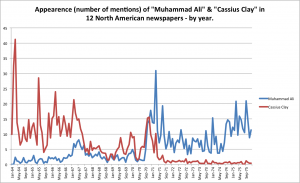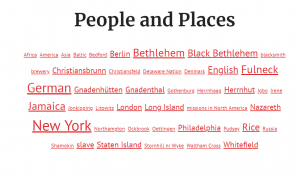I believe that we have started to look at textual material on the screen more than on a manuscript/printed page. Why go to the document when you can bring the document to you? The rise of technology is what is forcing humanities toward digital humanities: it has become effortless to pull up a document on your phone or computer. This switch to digital humanities means the research practices in the humanities must change as well. For digital humanities, a change in research practices does not simply mean understanding how to scan and upload documents. A large portion of the practice requires understanding of the use of visualization In the Whitley reading, Johanna Trucker defined visualization as, “A methodological reversal which makes visualization a procedure rather than a product and integrates interpretation into digitization in a popular way.” I love how she defined this because the last eight words really capture the essence of digital humanities: ‘integrates interpretation into digitization in a popular way.’ With the help of visualization, humanities will not fall behind in the wave of technological advance.
Digitized materials supplant the need to view to physical original copies. With the transition to visualization in the work of digital humanities, new ways of reading have come about. According to the Whitley reading, two new ways of reading are spatial reading and distant reading. Spatial reading means extracting the valuable information from a text so that you do not have to read it in a normal manner. Distant reading refers to stepping back and looking at trends between thousands of books/documents over time. These two new forms of reading supplant the need to view the original copies. I am not saying that we should just throw out the physical copies, but as long as we scan them, then we should not need to use them as much anymore.

I would say there is not yet a consensus for digitizing and editing archival material. However, that does not mean that some common practices for digitizing material have not arisen. One practice that was mentioned in the Whitley reading is tag clouds. These tag clouds can be designed in different ways, but their main use is to show the statistics for word count or word uniqueness in a document. Tag clouds are used to turn reading from a qualitative process to a quantitative process. The biggest advancement of tag clouds is that it connects with the idea of distant reading. By using tag clouds to look at word uniqueness in different documents, we can see how the uniqueness of words has changed over time. Tag clouds are even used on the DH site to show the most common places that have come up in their documents.

Mitch Gavars is a student at Bucknell University where he is a part of the swim team. Mitch is from Barrington, IL and has one sister. His favorite movie is Aladdin.
